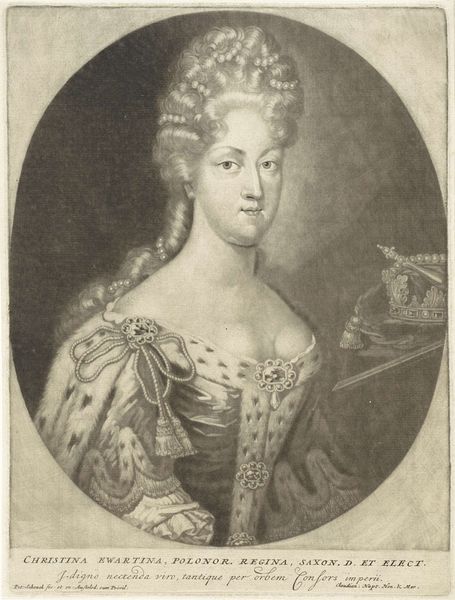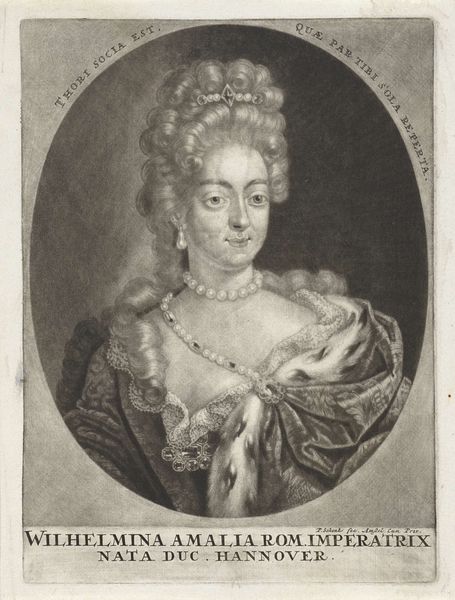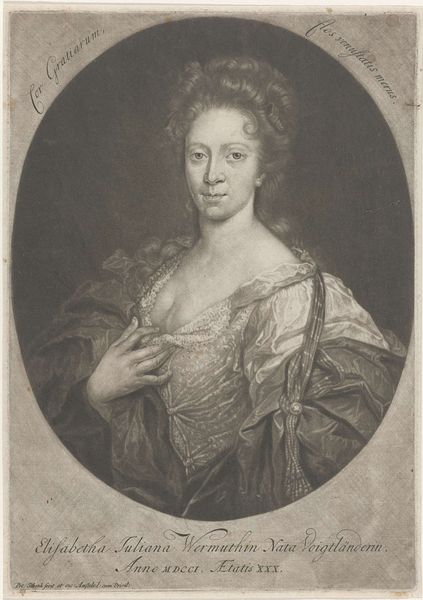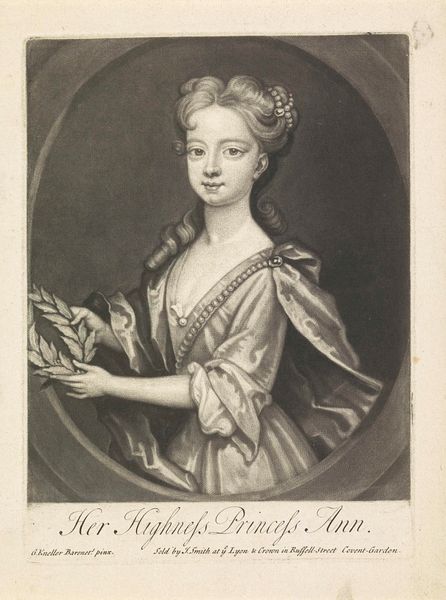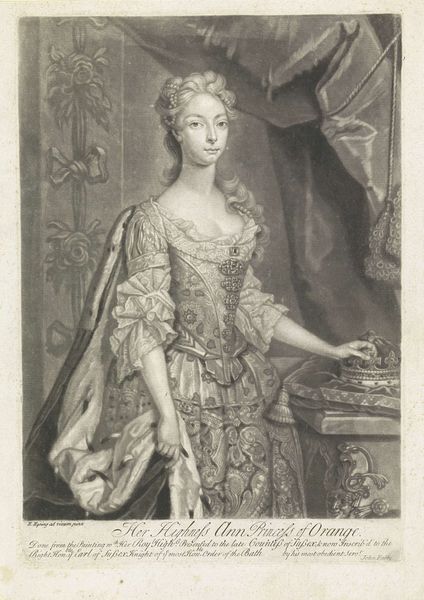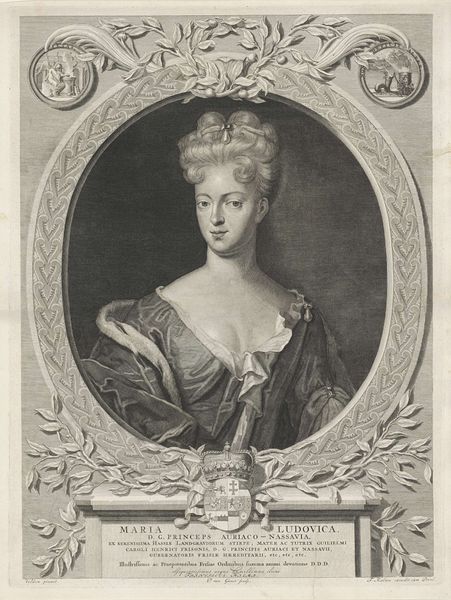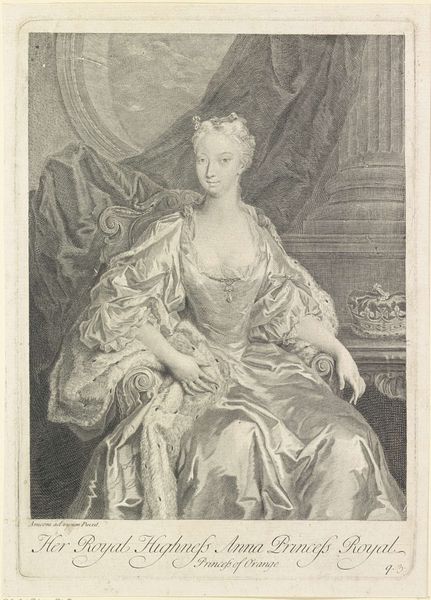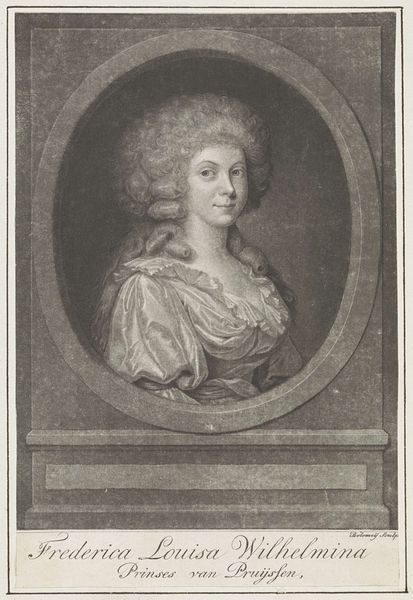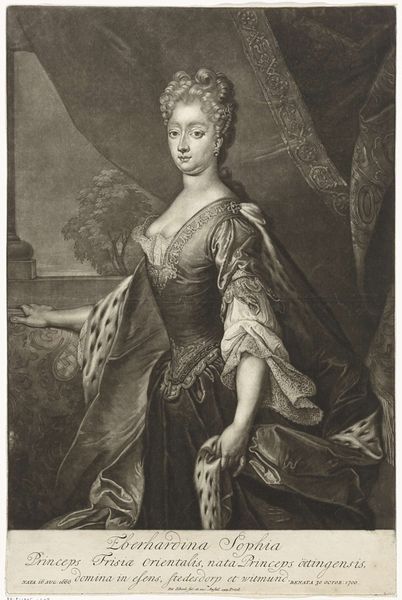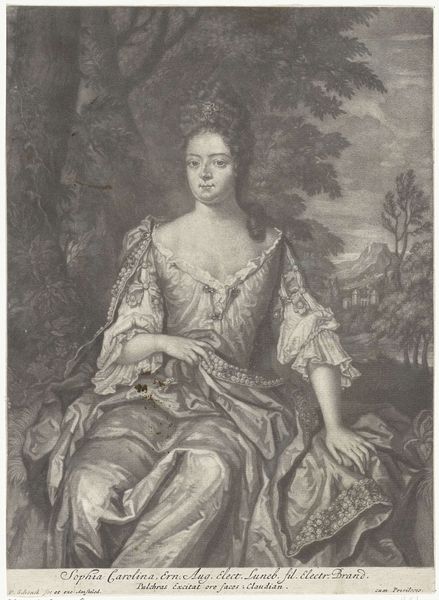
print, engraving
#
portrait
#
baroque
# print
#
portrait reference
#
19th century
#
history-painting
#
engraving
Dimensions: height 275 mm, width 190 mm
Copyright: Rijks Museum: Open Domain
Curator: Let’s take a closer look at Pieter Schenk’s “Portret van Elisabeth Christina, keizerin van Oostenrijk,” made around 1706. It’s a baroque print, an engraving to be exact. Editor: My first thought is the weight of symbolism embedded in this image. Look at her ornate gown, her towering hairstyle... It’s a careful construction of power. Curator: Yes, but think about the materials and labor involved in creating such a print! The paper, the inks, the painstaking work of the engraver meticulously carving those fine lines into the plate. Consider too the context in which this was made and consumed. This image was created during her lifetime and it presents an early modern Habsburg. It shows the deliberate consumption choices of the imperial classes and court. It offers insights into court practices regarding gifting prints or collecting art, particularly engravings. Editor: Precisely! That deliberate display contributes to the symbolism. The ermine, the crown-like jewel in her hair—they signify not just wealth, but dynastic power. It's a potent visual language speaking of legitimacy and divine right. The detail put into portraying the laces of her dress show off the height of European courtly fashion, a fashion in itself a complex semiotic system. It also carries emotional weight. She appears almost ethereal, idealized and timeless. Curator: The engraving process itself plays into that sense of timelessness. It allowed for relatively mass production of the image, spreading it far and wide and also reducing production costs. The same can be said of how patterns are replicated within the art; that replication signals larger social concerns with production and the political economy in Europe at this time. Also, its reproduction via prints signals how prints played an important role in disseminating the images of prominent rulers. Each copy served to broadcast the Habsburg claim. Editor: Absolutely. What’s fascinating is how these visual symbols continue to resonate even today. The portrait serves as a cultural touchstone, instantly conjuring images of European courts and historical notions of sovereignty. You said each copy worked to broadcast Habsburg claim and in effect, each copy acts as an imperial agent in the cultural imagination. Curator: Looking at the print through this lens, we start to recognize the very concrete materials and process of distribution and labor as an implicit political gesture that still shapes our historical imagination today. Editor: Indeed, and the layering of symbol and context—a perfect reminder that images never exist in isolation.
Comments
No comments
Be the first to comment and join the conversation on the ultimate creative platform.
